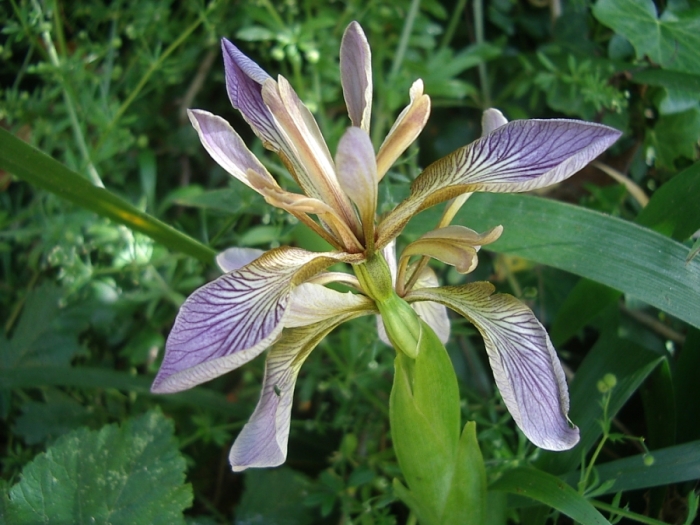Stinking Iris
(Iris foetidissima)
Stinking Iris (Iris foetidissima)
/
/

Jymm
Public domain




















































Estimated Native Range
Summary
Stinking Iris is valued for its ability to thrive in shady conditions and for the striking appearance of its seed pods in the fall and winter. It is often used in woodland gardens, shaded borders, and underplanting beneath trees and shrubs. It is tolerant of a range of soil types, provided they are well-drained, and can handle dry shade once established. ’Variegata’ is a popular cultivar with variegated foliage that adds an extra layer of interest to the garden. Care should be taken as the plant can spread readily by seed and may become invasive in some areas.CC BY-SA 4.0
Plant Description
- Plant Type: Herb
- Height: 1-2 feet
- Width: 1-1.5 feet
- Growth Rate: Moderate
- Flower Color: Purple
- Flowering Season: Spring
- Leaf Retention: Evergreen
Growth Requirements
- Sun: Full Sun, Part Shade
- Water: Medium
- Drainage: Slow, Medium, Fast
Common Uses
Bee Garden, Bird Garden, Butterfly Garden, Deer Resistant, Drought Tolerant, Groundcover, Hummingbird Garden, Rabbit Resistant, Rock Garden, Salt Tolerant, Showy Flowers, Street Planting, Water Garden
Natural Habitat
native to open woodlands, shady banks, and coastal areas in Western Europe
Other Names
Common Names: Gladdon, , Roast-Beef Plant, Roast-Beef-Plant, Stinking Gladwyn, Gladdon Iris, Gladwyn, Übelriechende Schwertlilie, Iris Gigot, Iris Puant
Scientific Names: , Iris foetidissima, Iris foetida, Chamaeiris foetidissima, Iris gaditana, Iris foetidissima var. lutescens, Xiphion foetidissimum, Chamaeiris foetida, Iris foetidissima var. flavescens, Iris foetidissima var. livida
GBIF Accepted Name: Iris foetidissima L.